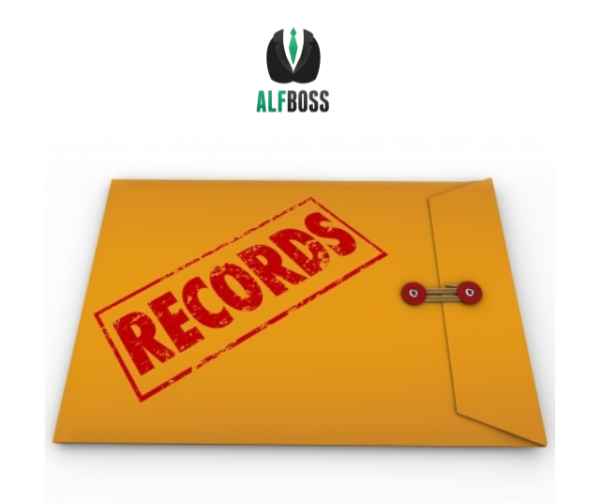
Resident record requirements
When a resident is admitted into your residence there are many administrative pieces that are required to be completed by the facility. In addition to your community specific move-in policies there are also required documents to be included in the resident file. Check out the following regulation provided by the Massachusetts Executive Office of Elder Affairs for the requirements of the resident record:
12.05: Record Requirements
All records created or maintained by the Assisted Living Residence shall be legible, recorded in ink, and contemporaneously signed and dated to indicate the name and position of the individual who makes the record entry. Computerized records systems which meet the equivalent requirements in 651 CMR 12.05 for permanency and accessibility, and which provide an auditable record of entries may be used as an alternative or supplement.
(1) Resident Record. The Assisted Living Residence shall develop and maintain written Resident records which shall remain confidential but for the limited exception of EOEA’s enforcement of 651 CMR 12.00. The Resident Record and related documents are considered permanent and shall be maintained for the duration of the Resident’s stay in the Assisted Living Residence and for at least six years after the date of termination of the Agreement. The Resident record shall include at a minimum, the following:
(a) Resident assessment, documented in accordance with the requirements set forth at 651 CMR 12.04(6)(b);
(b) Service plans documented in accordance with the requirements of 651 CMR 12.04(8);
(c) Progress notes, which shall document significant occurrences, either observed by or reported to Residence staff, including significant or continued changes in the Resident’s behavior or memory; incidents involving injury, trauma, illness, or abuse or neglect of the Resident, including but not limited to the recording of incidents in which a resident has been the victim of an assault by another Resident or the perpetrator of an assault on another resident, regardless of whether such a report would be required by law; alleged or actual violations of the Resident’s rights as defined in 651 CMR 12.08; and changes in the Resident’s service plan;
(d) Documentation of Introductory Visits set forth at 651 CMR 12.07(6);
(e) Documentation of Self-administered Medication Management, including the SAMM assessment required by 651 CMR 12.04(6)(a)3.;
(f) Documentation of all aspects of Limited Medication Administration, if applicable. This includes, but is not limited to, a proper written medication order from an authorized prescriber, documentation of the name, dose, route of administration, and time the medication is administered. The nurse who administers the medication shall sign or initial the documentation;
(g) The following documents are also part of the Resident record, and may be kept in a separate location(s):
- Any applicable guardianship orders, authorized powers of attorney, Health Care Proxy documents, living wills, and other relevant documents affecting or directing Resident care (including Department of Public Health Comfort Care/”Do Not Resuscitate Order Verification Form”, provided that their existence and location is conspicuously documented in the Resident’s record and they are immediately available in case of an emergency;
- The original Residency Agreement and any documents which extend or amend the Residency Agreement; and
- The Disclosure of Rights and Services required by 651 CMR 12.08(3).
(2) In addition to the individual record requirements in 651 CMR 12.05(1), each Residence that exists within a setting which does not consist exclusively of Assisted Living Units, shall maintain a current census document, updated at least weekly, listing the name of each Resident residing in each occupied certified unit. Each census document shall be kept for a minimum of two years
Top Takeaways:
- The Resident Record and related documents are considered permanent and shall be maintained for the duration of the Resident’s stay in the Assisted Living Residence and for at least six years after the date of termination of the Agreement.
Any documents pertaining to the resident’s care must be filed in the resident records, not just for the time they are living within the community, but for a period of 6 years after they are no longer a resident. EOEA will ask to audit the resident record upon their visit to the community to ensure you are compliant with the regulation.
(g) The following documents are also part of the Resident record, and may be kept in a separate location(s):
- Any applicable guardianship orders, authorized powers of attorney, Health Care Proxy documents, living wills, and other relevant documents affecting or directing Resident care (including Department of Public Health Comfort Care/”Do Not Resuscitate Order Verification Form”, provided that their existence and location is conspicuously documented in the Resident’s record and they are immediately available in case of an emergency;
- The original Residency Agreement and any documents which extend or amend the Residency Agreement; and
- The Disclosure of Rights and Services required by 651 CMR 12.08(3).
Many facilities will choose to keep a separate “financial file” to enclose the aforementioned documents. This is a good way to separate health related materials from any other documentation (which means less eyes on sensitive resident information).